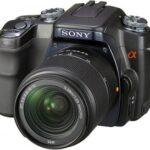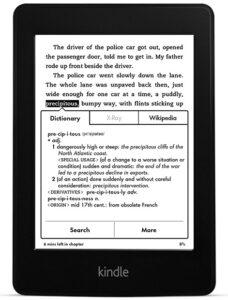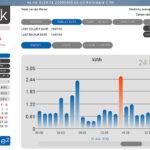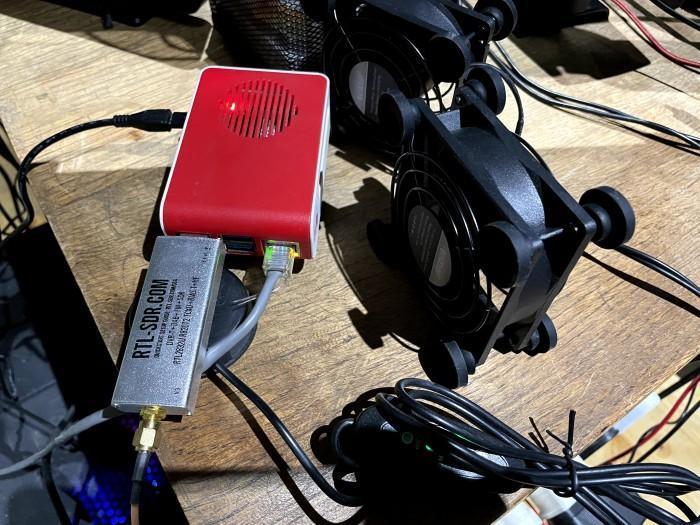Another one of my passions – anything with batteries in it!
Computers
- My Main PC is a custom built one with:
- Motherboard – Asus TUF B450M-Pro Gaming
- CPU – AMD Ryzen 7 3700X
- RAM – 4x 8G DDR4-3200 (32 GB)
- Storage – 2x 2TB Western Digital SATA hard drives, 128GB Transcend SSD, 128GB Crucial BX100 SSD
- Power supply – 500W CoolerMaster MWE White PSU and is connecting directly to the solar inverter in the house for clean uninterruptible power
- Keyboard – Redragon K550 RGB Yama 131 Key RGB LED Illuminated Backlit Mechanical Keyboard (cherry brown ‘equivalent’ switches = tactile feedback)
- Mouse – Redragon M801 Mammoth 16400 DPI Programmable Laser Gaming Mouse
- Webcam – Logitech HD Pro Webcam C910 with face recognition login, Carl Zeiss optics, echo-free stereo audio, 1080p full HD video, and RightLight2 for low light
- Graphics card – MSI GeForce RTX 2060 Gaming Z 6GB
- Gaming – Logitech G29 racing wheel with pedals and gear change, which works well with Linux and is widely by most games
- Headset – Corsair Virtuoso RGB Wireless XT High-Fidelity Gaming Headset
- Operating system – Manjaro Linux KDE 64-bit
- OMV NAS – OMV running with two 4TB hard drives, which hosts various of my home hosted services in Docker containers
- Router – Asus RT-AC88U dual-band wireless gigabit router – this is the device that connects and manages everything in the house and connects to my upstream Internet via 200 Mbps fibre link
- Macbook Air 11″ computer which as now completely replaced my Android tablet for daily use as it fits nicely in my Scottevest for carrying around and runs on its battery for about 10 hours. This device still works perfectly well about 7 years later (in 2021).
- Asus Vivobook with an AMD Ryzen 5 CPU and Windows 10 – I love that you can set the maximum SoC for the battery eg. 80%.
Health
- Apple Watch Series 6 – I sold both the Ticwatch Pro and the Fitbitbit Charge 4 and got this watch. The reason being I realised a square screen is better for text (even though the round screen looks nicer for watchfaces), and also it has better analytics for ECG, heart rate alerts, oxygen levels, etc. I must have my groceries app and this watch does handle that too. Only “downsides” were I had to switch from an Android phone to an iPhone, and I must charge it daily (but I have an alarm set to do that at 22:30 every evening).
- Oura Ring – a biohacker’s dream which does detailed analytics while sleeping of heart rate, oxygen levels, temperature, etc.
GPS
I have a Garmin GPSMAP 60CS GPS (now discontinued). It combines car, hiking, marine and aviation functionality into one unit. My car GPS (specialized just for car navigation) is a Garmin Nuvi 3790T GPS (bought in April 2011, but currently I use Google Maps and Waze largely because of up-to-date maps and social reporting) with live traffic routing, voice commands, 3D buildings and terrain, etc, and it learns from the history of your driving. If you thought GPS’s were just for finding directions, then think about these uses:

- Send someone a saved track and they can go over exactly the same route, eg. You could retrace an overseas tour including where the person walked around, or find your way back on a hiking trail to your base camp. Also useful to play back your exact speed, location and time if you need to prove you were not speeding.
- GPS games – you stand in an open park and it has a virtual maze so you have to walk around as if you were walking between hedges, can’t cheat as it traces your path on the screen as you move.
- Golf – determine distance and direction to hole even if you cannot see it (just need to save coordinates beforehand)
- Coach Tours – maximise time on walkabouts by saving location of coach and tracking “estimated time to arrival” which will take your walking speed and the distance into account to ensure you arrive back on time. Also useful for quickly finding places of interest in an unknown city.
-

- Check whether delivery drivers stray from their routes or drive too fast.
- Sunrise & sunset times for wherever you are with phase of moon.
- Alerts to anchor drag if you are anchored in a boat. Use Trac-Back feature to trace exact path back to harbour if fog bound. Man-over-board feature will instantly plot position and navigate you back to that point. Also useful to find the same fishing spot in the future, or exchange fishing spots with friends, or remember a spot to stop at on a return trip to take photographs.
- Proximity warning for rocks in water, speed traps, shallow water, etc.
- Flight – rate of ascent or descent, find an airport, navigate to airport, altitude.
- Altitude, weather forecast using its barometer (those GPS’s that have it at least)
- Geocaching – sport in which you use your GPS to find hidden caches
- Parachute function that monitors all sorts of variables and advises when to deploy chute (if you are really the trusting type and have loaded fresh batteries!!).
- ETA function (Estimated Time of Arrival) – I regularly use this to time my speed to arrive at destination for business meetings or to catch a flight.
- OpenStreetMap – use your GPS to contribute to building up free maps. Maps.me is an excellent mobile app taht works with OSM.
Cameras

My backup ultra-compact point-and-shoot camera is a Sony DSC-HX9V with 16 megapixels and 16x optical zoom. This camera also has a built-in GPS for time/date as well as location. This is the camera I use when travelling.
GoPro Hero 3 Black Edition – for taking stills and video while riding my motorcycle. I have also added an extended battery, LCD touch back screen, etc to it.
Garmin Dash Cam 55 – voice controlled dash cam in the car with lane departure, forward collision and speed warnings.
Other Gadgets
- Chumby (upstream service now discontinued) – a compact device that can act like a clock radio, but is way more flexible and fun. It uses the wireless internet connection you already have, to fetch cool stuff from the web: music, the latest news, box scores, animations, celebrity gossip…whatever you choose. And a Chumby can exchange photos and messages with your friends. Since it’s always on, you’ll never miss anything. It has different channels you can set up for different purposes and examples that I currently use (sadly the original Chumby service has been discontinued but it has been resuscitated as a paid service) are:
- Wakeup – I have custom alarms set for weekdays and Saturdays, which start a channel with a widget that has a sun rising with birds tweeting (brightness and volume increase over 10 minutes). After this, my news RSS feeds kick in as well as weather, so I can quickly catch up.
- Sleep – with this channel, I have nature sounds (or New Age music from my USB stick) playing for 40 minutes on a timer. The display is darkened for night and shows the time along with a scrolling news RSS feed (in case I wake up and am bored in the middle of the night).
- Default – this I have set up to show news, weather, latest Flickr photos, Facebook, Twitter, Wikipedia article of the day, etc.
- Calculators – a 40-year-old HP-41CV that still works complete with original box, manuals, etc. Also an HP-12C Financial Calculator and a HP-50g Graphing Calculator. See a video of my HP-41CV powering up for the first time in 30 years.
- Apple iPhone 12 Pro – replaced my Android Pixel 2 XL in Feb 2021. Apart from getting an Apple Watch, the iPhone does get 7 to 8 years of security patches and updates (vs 3 years on Android) and I can pay to have a battery replaced or repairs done (could not do this with my Pixel phone). Apple has also been demonstrating more support for users’ privacy than Google has been. So although it has less freedom than an Android phone, it’s a bit more stable and it has a lot of improvements and more freedom since I last had an iPhone 3. I’m pretty impressed with the camera and the LiDAR sensor, but my main gripe is that Truecaller (and similar) call identifiers are crippled on iOS.
- iGala Digital Photoframe – a WiFi enabled 800×600 8″ touchscreen LCD photo frame that will display RSS feeds, download photos directly from Flickr, Picasa, etc. It is powered by Linux. The iGala service though has come to an end, so you need to now rely on the photo frame downloading from Flickr and other supported services.
- Kobo eReader – an eInk screen reader like the Kindle but a bit cheaper and uses the more open format ePub format.
- Kindle Oasis 10th Gen eReader bought in November 2019 off a Black Friday special as an upgrade to my Paperwhite 6th generation reader mainly because of a larger 7″ screen, sharper 300dpi resolution, and the orange backlight for night reading. See my review of this device at https://gadgeteer.co.za/my-impressions-after-using-my-new-kindle-oasis-ereader-week. Some of my key reasons for a Kindle were:

- Amazon already has just over 4 million in Kindle format (as at end Nov 2015). Prices average around US$6-11 per book. Books can literally be bought with a single click of the button (purchase and download). Books download within 60 seconds to your device (if I need a book while sitting on the beach, I can search for it and buy and be reading it within minutes). Amazon also allows you to download a sample of the first few chapters for free.
- Audiobooks from Audible.com can also be downloaded and listened to on the Kindle, as can audio podcasts (copy the MP3 file to the Audible folder on the Kindle – but note the Paperwhite has no audio like the Keyboard model had but the Oasis has Bluetooth audio).
- I can access and read these books on my Kindle device, my Android (or other) phone, and my PC using the free Kindle readers. Kindle for PC will also run under Wine on Linux. I am using the Calibre app on my computer to push ebooks via e-mail to my Kindle.
- Kindle syncs between my devices so if I read up to page 87 on my Kindle, I can log into the Kindle for PC app and continue reading there. It will also sync personal MOBI files uploaded through the cloud service, between Android/iOS apps and the Kindle devices.
- All highlighted text, notes and bookmarks sync via Amazon’s website and I can access my notes etc there. I can also share my notes with others, and it will post to Twitter and Facebook as well.
- The Kindle is a dedicated instant-on reading device so I get a good reader and not a do-it-all device that does nothing well.
- Screen is E Ink and works like paper, so there is no eye strain or backlighting. Works fine in bright sunlight. Font size can be quickly adjusted. This also accounts for the long battery life. I have had quite a few people comment in surprise about how sharp the text appears.
- The device runs for up to a month on a single battery charge (10 days with wireless on). The Paperwhite runs for about 8 weeks with WiFi turned off. The Oasis is a bit less unfortunately but still about 6 – 7 weeks.
- It has built-in free 3G international wireless coverage (even works in South Africa) with no need for contracts, payments, etc to connect to the bookstore to search, purchase and sync the books and notes. I can operate the Kindle completely independently of a computer with no lock-in to iTunes. It will also access basic websites such as Wikipedia, Twitter, Facebook Mobile, Google search, etc. The latest model also includes WiFi. My Oasis is WiFi only.
- Capacity is about 3,500 books (for 4GB storage, but Oasis has 8GB) and more can be archived on the online Kindle site. Size is about that of a typical paperback, and it is much lighter.
- My online newspaper subscription supports an export / download to Kindle format.
- It has a 3.5mm jack for listening to audio (not on the Paperwhite model). It will also download audiobooks of which Amazon has over 50,000 (in Nov 2015). With Read-to-me the Kindle will also read out a textbook aloud to me (useful for while driving and no need to buy a specific audiobook). The voice guide read-to-me menus will allow the visually impaired to also be able to use the Kindle. By transferring MP3’s from my computer via the USB link, I can also listen to podcasts on the Kindle (right now I cannot listen to podcasts on my iPhone while in flight as mobile phones have to be switched off during flights in South Africa – and now in 2014 this is again possible as long as phones are in flight mode). UPDATE: The Oasis has Bluetooth audio and no headphone jack, so it connects to wireless ear buds or Bluetooth speakers.
- Book formats supported: Kindle (AZW), TXT, PDF, Audible (Audible Enhanced (AA, AAX)), MP3, unprotected MOBI, PRC natively; HTML, DOC, JPEG, GIF, PNG, BMP through conversion. You can use a PC based e-Book organiser such as Calibre that will recognise the Kindle and sync books to it.
- Built-in dictionary with instant lookup so need to carry around a dictionary with you.
- So, in summary, it is a dedicated e-book reader that does what it does very well, it has a massive selection of books available via Amazon, I can operate it completely free form any computer, it will easily resell again in a year……. and it runs Linux as it’s OS, so I can hack it to even run Ubuntu Linux….
- To switch wireless providers on the Kindle 3 go to the Settings screen and while holding the ALT button press E then Q and Q again (on Kindle two just press 311). For South Africa select Vodacom-SA. For detailed info on your Kindle 3 hold ALT and press R then Q and Q again (Kindle 2 is 411). For detailed WAN information on Kindle 3 try holding ALT and pressing Y and then Q and Q again). LAN information on Kindle 3 can be obtained by holding ALT and pressing U and then Q and again Q).
- See an excellent list of shortcut keys and tips.
- Google Chrome has an extension that will send a webpage wirelessly to your Kindle for later reading.
- BlitzWolf BW-FYE1 true wireless earbuds – these cost only around $40 and replaced my Apple EarPods which started to lose battery life at 24 months.
- Logitech Harmony 688 Remote controller. It programs itself via the Internet and really can replace all your old remotes (without having to keep switching between modes)
- LG LW6510 TV – with passive 3D viewing and Internet streaming. It will also play back 3D YouTube videos. It uses standard cinema 3D glasses.
- Leatherman Charge TTi knife – my Wave has been in use for 14 years (since 1998) and goes most places with me. My longest surviving daily use gadget! Improvements that the Charge TTi has over the Wave I are all locking tools (much safer), Titanium handles, harder blade, and interchangeable tool bits (adding versatility). Both my Leathermans were autographed by Tim Leatherman when he was visiting Cape Town.
- Robosapien Version 2 Robot – OK it does not really do anything useful….. Now also a Mio Puppy.
- Yealink W56P Dect phone for VoIP phone calls over the Internet. This phone produces crystal clear no-lag calls and the battery lasts weeks.
- 5th Generation iPod 30GB with video – great for music, photos, video, podcasts, audiobooks, and keeping contact and calendar info in your pocket (since been superseded by using my Android phone which plays via Bluetooth to my car’s audio system). Its Notes function allows you to copy eBook text books or HTML formatted text documents to its Notes folder. It is also a 30GB external USB hard drive in your shirt pocket. Its only after I got my iPod that I realised it does not “just play a list of music” – it has quite a bit of customisation around smart playlists (it updates the playlists on the fly according to rules you can set) etc. Some other utilities / uses:
- How to convert PC video to the iPod using free Videora iPod Converter
- Another guide to getting video onto the iPod
- Wikipedia information on iPod
- With a video out cable you can show business presentation slides through a video projector using photos
- YamiPod is a freeware application to efficiently manage your iPod under Mac OS X, Windows and Linux. It can be run directly from your memory stick and needs no installation.
- GetCals – download Google Calendar appointments to your iPod calendar. Another, not so elegent, way (but does prevent duplicates) is to go to “Manage Calendars” on Google Calendar, and under Private addresses right click on the ICAL graphic and save the link or target as a file on your desktop. Rename that file’s extension to “.ics” and copy it into your iPod’s calendar folder. You can also save any iCal format calendar to the iPod’s Calendar folder (it can read more than one).
- iNote is a very simple Windows program that is used to convert large text files into small iPod readable files stored as notes. It is very much like the iPod eBook Creator (google it if you don’t know) and converts large text files into small, 4kb notes and links them together.
- GoogleGet is a small program designed to download the latest news and weather information from news.google.com (or a local variation).
- Rockbox is an open source replacement firmware for mp3 players. It replaces your iPod’s OS and adds new functionality like zooming photos, better sound quality, etc.
- Multi Boot Your iPod The Easy Way – instructions on how to multiboot into Podzilla (ucLinux for iPod), RockBox, Disc Mode and Apple OS. I have not tried this myself so proceed at your own risk.
- Cnet’s List of 3rd Party Add-On software for the iPod.
- Weber Audible Meat Thermometer – WiFi remote cooking sensor which alerts you when the meat on the BBQ is done.
- Sony NSZ-GS7 Internet Player with Google TV – got this in September 2012 but Sony has not been issuing any software updates for it so I have discontinued using it.
- SainSmart SS808 PC-On-A-Stick/ Mini Computer – this memory stick size device plugs straight onto an HDMI port of my TV and runs all sorts of Android apps and games on the TV.
- Raspberry Pi 2 – I’m using Synergy to share my main computer’s keyboard and mouse to the Pi. I have a Pi 3 which monitors and uploads my weather station data, as well as one which receives and uploads APRS data.
- Bosch PLR 50 laser distance measuring tool – up to 50m measurement.
- Ambient Weather WS-2902C Weather Station – it replaced my Acurite 5-in-1 Professional Weather Station in May 2021 as the Accurite was giving faulty readings. I still had a bitter taste left in my mouth from the way Acurite just discontinued the API for that station one year after I bought it and the upgrade offer was only valid in the USA. The new one uploads directly to 3 online weather services so I don’t need a smarthub nor actually a Raspberry Pi, so it is a simpler setup and does solar UV redaings as well. You can view my station’s weather data at Weather Underground and my weather station’s ID is ITHORNTO11.
- Solar installation – I have a Victron Multiplus II with 12 Candian Solar (brand) solar panels, and you can see photos of it at Solar Photos and view the live stats at the Victron site.
- Oregon Scientific UV Monitor – This portable UV monitor measures and records UV levels and displays a UV reading from low to high. It will calculate UV exposure time based on your skin type, sunscreen factor and UV reading.

- OWL Wireless Electricity Monitor – Wireless display that you can take with you around the house and which shows current electricity consumption in KW, current cost per hour in cents, and greenhouse gas emissions. It shows you the cash impact of changing your habits and behaviours which could amount to savings of hundreds of Rands per year. I replaced this monitor with one from Efergy.com which has the added advantage of downloading usage stats to your PC (see embedded screenshot here).

- Geyserwise – an intelligent hot water controller with four different time settings for week days and weekends. The photo here shows the remote control device that is situated in easy reach within the bathroom where you can adjust the temperature, see when the water is warm enough to use it, quickly shut the geyser off if you don’t intend to use it again during that warming cycle, etc.

